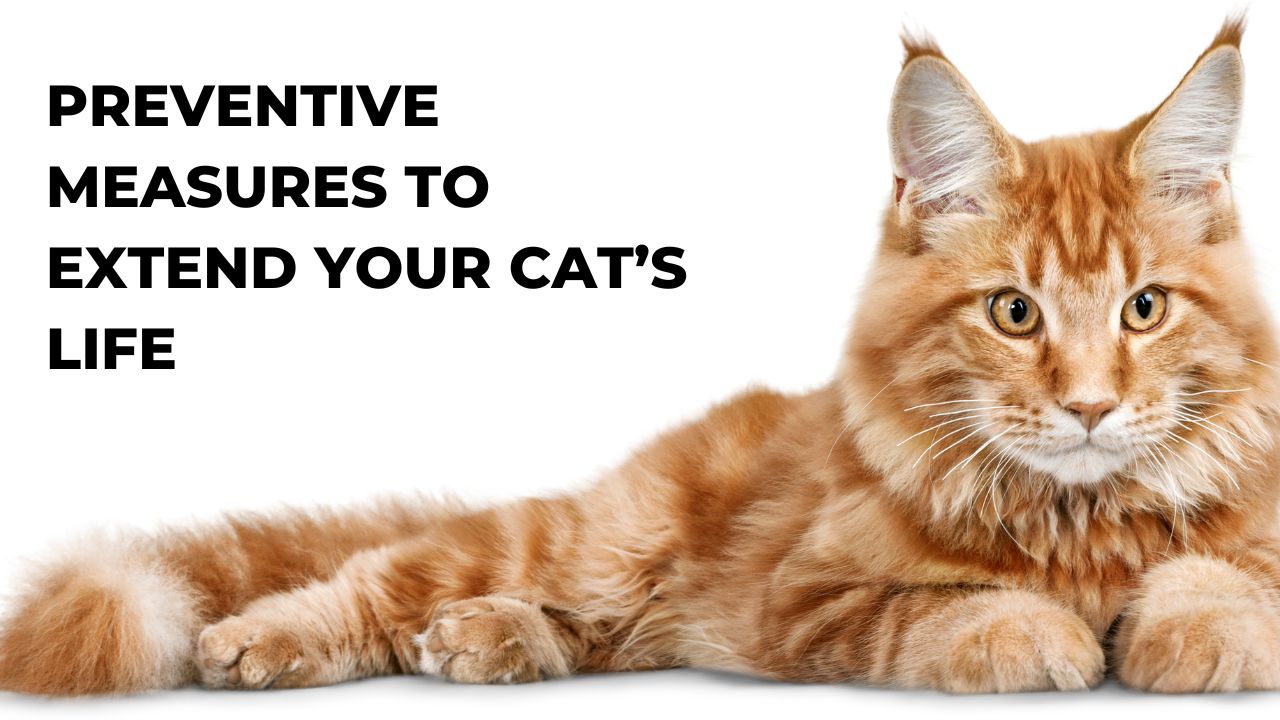Have you ever sat quietly watching your feline friend nap in a sunbeam and wondered about the hidden challenges they face?
Cats are mysterious, graceful creatures, often appearing invincible with their agility and independence.
Yet, like all living beings, they have vulnerabilities. So, what is the most common cause of death in cats?
Let’s dive deep into understanding the health risks our whiskered companions encounter and how we can better protect them.
Understanding Feline Health Risks
Cats, despite their reputation for resilience, are susceptible to a variety of health issues. Recognizing these risks is the first step in ensuring your cat lives a long, healthy life.
The Top Culprits
While there are numerous causes of death in cats, certain factors stand out due to their prevalence and impact:
- Kidney Disease
- Feline Lower Urinary Tract Diseases (FLUTD)
- Cancer
- Infectious Diseases
- Trauma (Accidents)
- Hyperthyroidism
- Heart Disease
Among these, kidney disease emerges as the most common cause of death in cats. Let’s explore why.
Kidney Disease: The Silent Threat
What is Feline Kidney Disease?
Feline kidney disease, particularly Chronic Kidney Disease (CKD), is a progressive condition where the kidneys gradually lose their ability to function effectively.
The kidneys play a crucial role in filtering waste products, regulating blood pressure, and maintaining electrolyte balance. When they fail, toxins build up in the body, leading to various health complications.
Why is Kidney Disease Prevalent in Cats?
Several factors contribute to the high incidence of kidney disease in cats:
- Aging: Kidney disease is more common in older cats. As cats age, their kidney function naturally declines.
- Dehydration: Cats often have a low thirst drive and may not drink enough water, leading to kidney strain.
- Diet: Poor nutrition can impact kidney health. Diets high in phosphorus and low in quality protein can exacerbate kidney issues.
- Genetic Predisposition: Certain breeds are more susceptible to kidney disease.
Signs and Symptoms
Recognizing the signs of kidney disease early can make a significant difference in managing the condition:
- Increased Thirst and Urination: One of the earliest signs.
- Weight Loss: Due to decreased appetite and muscle wasting.
- Vomiting and Diarrhea: Resulting from toxin buildup.
- Lethargy: Reduced energy levels and increased sleep.
- Poor Coat Condition: Dull fur and skin issues.
Managing Kidney Disease
While kidney disease is a serious condition, there are ways to manage it and improve your cat’s quality of life:
- Dietary Changes: Specialized kidney diets can reduce the workload on the kidneys.
- Hydration Support: Encourage water intake with fountains or wet food.
- Medications: To manage symptoms like high blood pressure or anemia.
- Regular Vet Check-ups: Monitoring kidney function and adjusting treatment as needed.
Other Common Causes of Death in Cats
Feline Lower Urinary Tract Diseases (FLUTD)
FLUTD encompasses various conditions affecting the bladder and urethra. It’s particularly prevalent in male cats due to their narrower urethras.
Symptoms include frequent or painful urination, blood in urine, and urinary blockages, which can be life-threatening if not treated promptly.
Cancer
Just like humans, cats can develop various forms of cancer. Lymphoma, squamous cell carcinoma, and mammary cancer are among the most common types.
Early detection and treatment are crucial for improving survival rates.
Infectious Diseases
Feline leukemia virus (FeLV) and feline immunodeficiency virus (FIV) are significant infectious diseases that weaken the immune system, making cats more susceptible to other illnesses. Vaccination and regular testing can help manage these risks.
Trauma and Accidents
Outdoor cats are at higher risk of accidents, including being hit by cars, fights with other animals, or exposure to toxins. Ensuring your cat remains indoors or providing a safe outdoor enclosure can mitigate these dangers.
Hyperthyroidism
A common condition in older cats, hyperthyroidism is caused by an overactive thyroid gland, leading to symptoms like weight loss, increased appetite, and hyperactivity. Treatment options include medication, radioactive iodine therapy, or surgery.
Heart Disease
Cardiomyopathy and other heart conditions can severely impact a cat’s health. Symptoms may include lethargy, coughing, and difficulty breathing. Early diagnosis and treatment are essential for managing heart disease.
Preventive Measures to Extend Your Cat’s Life
While some health issues are inevitable, many can be prevented or managed with proactive care:
- Regular Vet Visits: Annual check-ups can catch health issues early.
- Balanced Diet: Providing high-quality, species-appropriate food supports overall health.
- Hydration: Encourage water intake through multiple water sources and wet food.
- Indoor Living: Reduces exposure to outdoor hazards and infectious diseases.
- Vaccinations and Parasite Control: Protects against common diseases and parasites.
- Spaying/Neutering: Reduces the risk of certain cancers and behavioral issues.
Real-Life Stories: Learning from Others
Bella’s Battle with Kidney Disease
Bella, a seven-year-old tabby, started showing signs of increased thirst and weight loss. Her owner took her to the vet, where she was diagnosed with CKD.
With a specialized diet, increased hydration, and regular vet visits, Bella managed her condition for several years, enjoying a comfortable and happy life despite her diagnosis.
Max’s Fight Against FLUTD
Max, a male Siamese, experienced painful urination and frequent trips to the litter box. A prompt visit to the vet revealed FLUTD.
Through dietary adjustments and environmental enrichment to reduce stress, Max was able to recover and return to his playful self.
FAQs: Addressing Common Concerns
1. Can kidney disease in cats be cured?
Currently, there is no cure for chronic kidney disease in cats. However, with proper management, symptoms can be controlled, and the progression can be slowed, allowing cats to live comfortable lives.
2. How can I encourage my cat to drink more water?
Provide multiple water bowls, use water fountains, incorporate wet food into their diet, and place water bowls in different locations around the house to encourage increased intake.
3. Are indoor cats less likely to develop kidney disease?
Indoor cats may have a lower risk of certain diseases, but kidney disease is primarily associated with age, genetics, and diet rather than environmental factors. Providing a balanced diet and regular vet check-ups is crucial for all cats.
4. What are the signs of hyperthyroidism in cats?
Common signs include weight loss despite an increased appetite, hyperactivity, vomiting, diarrhea, and a poor coat condition. If you notice these symptoms, consult your veterinarian.
5. Is cancer common in cats?
Yes, cancer is one of the leading causes of death in cats, especially as they age. Regular veterinary check-ups can help in early detection and treatment, improving the chances of successful management.
Conclusion:
Understanding what is the most common cause of death in cats equips you with the knowledge to better care for your furry companion.
Kidney disease tops the list, but awareness of other health risks and proactive measures can significantly enhance your cat’s quality of life.
Regular veterinary care, a balanced diet, and a safe environment are your best defenses against the silent threats that cats face.
Remember, every cat is unique, and what works for one may not work for another. Stay observant, listen to your cat’s needs, and don’t hesitate to seek professional advice when something feels off.
After all, our feline friends deserve the best care we can provide to ensure they lead happy, healthy lives by our side.



